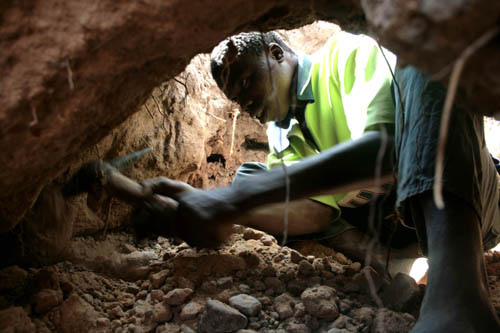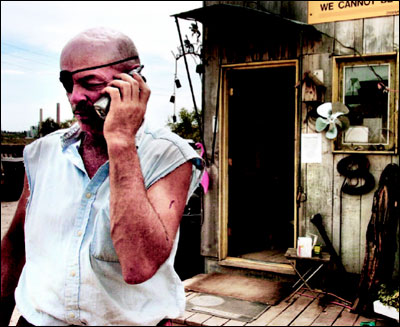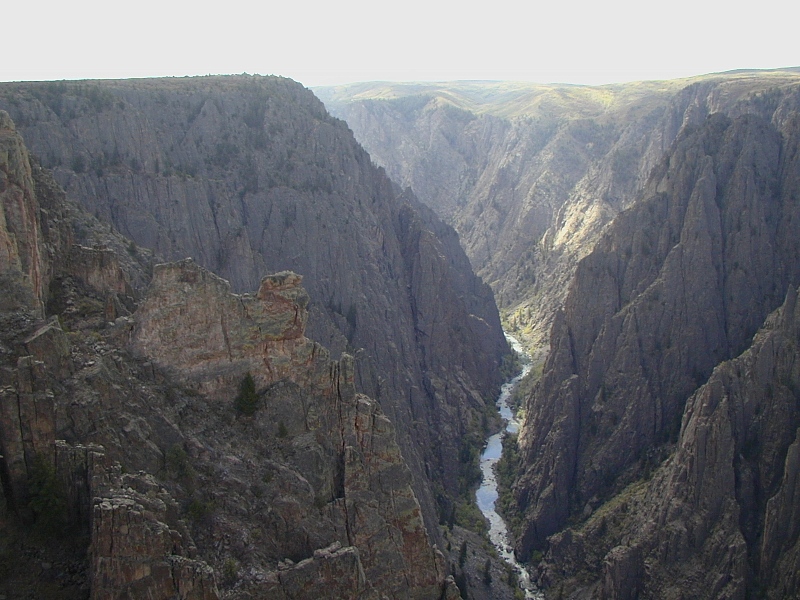 For many years now, developing countries bestowed great amounts of natural resources were thought to be on a path to development based on the wealth of these resources, which are prized throughout the West. Such resources have included oil, minerals, metals and of course diamonds. However, almost exclusively, this potentially game-changing situation has lead to corruption, embezzlement and political and often human destruction. In 2003 the Kimberley Process (fully known as the Kimberly Process Certification Scheme) was put into effect in order to certify that diamonds you buy were not sold to fuel conflict. This was mainly a reaction to civil wars in Sierra Leone and Liberia.
For many years now, developing countries bestowed great amounts of natural resources were thought to be on a path to development based on the wealth of these resources, which are prized throughout the West. Such resources have included oil, minerals, metals and of course diamonds. However, almost exclusively, this potentially game-changing situation has lead to corruption, embezzlement and political and often human destruction. In 2003 the Kimberley Process (fully known as the Kimberly Process Certification Scheme) was put into effect in order to certify that diamonds you buy were not sold to fuel conflict. This was mainly a reaction to civil wars in Sierra Leone and Liberia.
As I wrote about once before, the Process has been somewhat controversial as to which diamonds it certifies and which diamonds it does not. This has been specifically the case in Zimbabwe where the fight has been ongoing by the Zimbabwe government to get their large, 50% state-owned diamond mine, Marange, certified by the Kimberly Process. Depending on whom you talk to, diamonds were found here in 2006 after which the area was inundated with small, private entrepreneurs looking to strike it rich. Of course, the ZANU-PF wasn’t about to give up easily on a mine that today is tentatively valued at $5 billion. As a result, the army came in and took over, resulting in death and displacement. According to many, including Human Rights Watch, this type of violence and worker mistreatment has continued.
So, clearly, this mine should not be protected under the Kimberly Process, as it is owned by an unyielding government with a long history of human rights abuses. Not so fast. Apparently the parties involved in the certification did not exactly see it that way as a June 23 meeting in Kinshasa resulted in the certification of sales under the Kimberly Certification.
So what’s the problem here? Well, it turns out that not everyone’s clear on what constitutes human rights abuses (not surprising) and how they are understood within the Kimberly framework. According to the original document, human rights abuses equate to “systematic and gross human rights violations”. I think we can apply this to the horrific events in Sierra Leone and Liberia quite easily, although apparently not so in Zimbabwe. There is no clear civil conflict or rebel movement and apparently what is taking place human rights-wise in relation to the Marange mine does not constitute “systematic and gross human rights violations”.
To me, the takeaway here isn’t so much whether the Marange mine should be certified or not, rather it is an issue of clarification on what the Kimberly Process includes in its certification and what it is really looking to achieve. It’s extremely difficult (and mildly embarrassing) to institute an important process based on an issue of human rights and be unable to decide standards because the language of the founding documents are too vague or interpretive. Clearly, it’s not all black and white, but the gray areas must be understood and hopefully addressed before a situation like Marange arises.
Image Credit by Anne Mpalume via Flickr under a CC license




